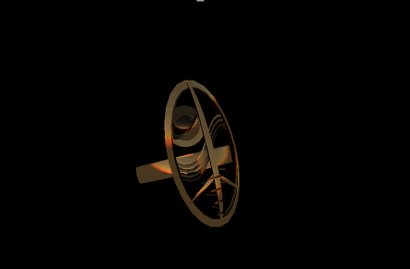Preliminary Thoughts on Virtual Diamond Standards
Much has been going through my mind lately on the standard for diamonds in SL. Whether one likes bling or not one has to admit that any physical-life type diamond will have to compete with bling for how the diamond calls attention to itself. It is my belief that any realistic diamond of supreme quality in Second Life will not have to compete, but will stand alone as its own phenomenon. Isn't that what a diamond is anyway; a phenomenon?
It is not just the diamond that is a phenomenon in physical life and in Second Life, but any gem. When I speak of diamonds below I am including all gems in my thinking, except in the specific physical characteristics list, the same rules apply.
I would like to concentrate in this entry about Second Life qualities, not physical life qualities of gems and how we, as a virtual society, can create rules to determine what qualifies as a diamond and what does not. The physical qualities of a diamond are:
PHYSICAL CHARACTERISTICS OF DIAMONDS:
(from http://mineral.galleries.com/minerals/elements/diamond/diamond.htm)
- Color is variable and tends toward pale yellows, browns, grays, and also white, blue, black, reddish, greenish and colorless.
- Luster is adamantine to waxy.
- Transparency crystals are transparent to translucent in rough crystals.
- Crystal System is isometric; 4/m bar 3 2/m
- Crystal Habits include isometric forms such as cubes and octahedrons, twinning is also seen.
- Hardness is 10
- Specific Gravity is 3.5 (above average)
- Cleavage is perfect in 4 directions forming octahedrons.
- Fracture is conchoidal.
- Streak is white.
- Associated Minerals are limited to those found in kimberlite rock, an ultramafic igneous rock composed mostly of olivine.
- refractive index is 2.4 ( very high)
- dispersion is 0.044, fluorescent.
- Notable Occurrences include South Africa and other localities throughout Africa, India, Brazil, Russia, Australia, and Arkansas.
- Best Field Indicator is extreme hardness.
Again, these are PHYSICAL characteristics and we will have to determine which apply and which do not as well as providing VIRTUAL characteristics that do not apply to the physical world.
- Color - applies in VR, but is easily changed. With caveats.
- Luster - applies in VR, but is less easily changed than color. With caveats.
- Transparancy - applies in VR, but is less easily changed than color. With caveats.
- Crystal System - Does not apply
- Crystal Habits - Does not apply
- Hardness - Does not apply
- Specific Gravity - Does not apply
- Clevage - Does not apply
- Fracture - Does not apply
- Streak - applies in VR, but is less easily changed than color. With caveats.
- Associated minerals - Does not apply
- Refractive index - Applies, but with changes
- Dispersion - Applies but with changes
- Notable Occurrences - Applies
- Best Field Indicator - Applies
So the above are PHYSICAL characteristics of diamonds in general. We need to create definition for those items which do apply in a virtual world and add those which are not applicable to the physical world such as "base prims".
On to specific diamond grading. If you're familiar with "The Four C's" of diamonds you'll understand what I'm actually attempting to define here. The four C's of physical-life diamonds are:
- Cut
- Color
- Clarity
- Carat Weight - 144 carats equals one troy ounce
A good, understandable brochure of these is at http://lgdl.gia.edu/pdfs/4cs_brochure.pdf. If you are interested in an extended definition I recommend http://www.tradeshop.com/gems/ as an intermediate level resource.
These are all good, but they're a generalization. I prefer the categories used by the Gemological Institute of America, or GIA Diamond Grading Report. You can see one and an explanation at http://www.4diamond.com/Anatomy/.
Here are the major categories from which the four C's are derived:
- Shape and Cutting Style (Cut)
- Measurements (Carat)
- Weight (not applicable, however "size" is) (Carat)
- Proportions - (Cut and Carat)
- Finish - (Clarity)
- Clarity grade - (Clarity)
- Color Grade - (Color)
- Flourescence (full bright) (Color)
I should stop here and propose the formation of a group of individuals who should assess and come to agreement on the attributes of an SL diamond. The charter of the group would be to:
- A. Identify the characteristics of virtual diamonds (see Physical Characteristics above)
- B. Identify the definitions of those physical characteristics which continue to apply in a virtual world.
- C. Provide a body of oversight for diamonds released in virtual worlds and a GIA-type grading report for each for use by potential consumers.
Once A and B are done then C would be the on-going chore for the GISL (Gemological Institute of Second Life), except during cases of reassessment of the characteristics and quality criteria which may have to follow upgrades in the SL environment itself on occasion.
Feedback is welcome. Please IM me in-world with the names of anybody you feel may qualify for membership in the GISL. They would not have to know how to make a diamond to identify what it should be.


1 comment:
Next day - I did create the GISL group and am pleased to announce that Simone Rees (SL name) of simonestudios.com has joined me as co-founder of the institute.
Post a Comment